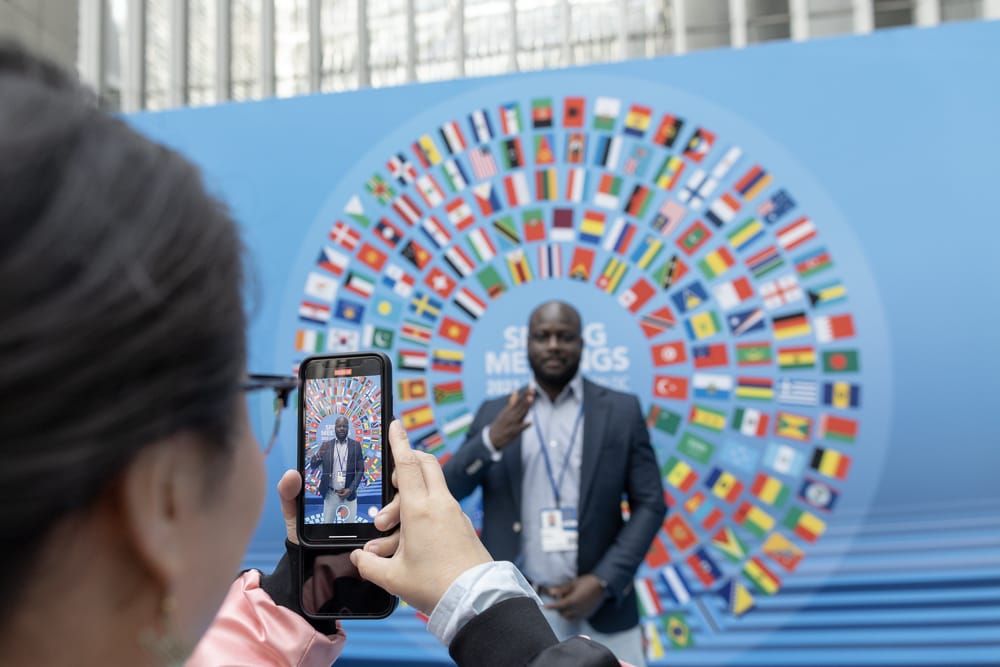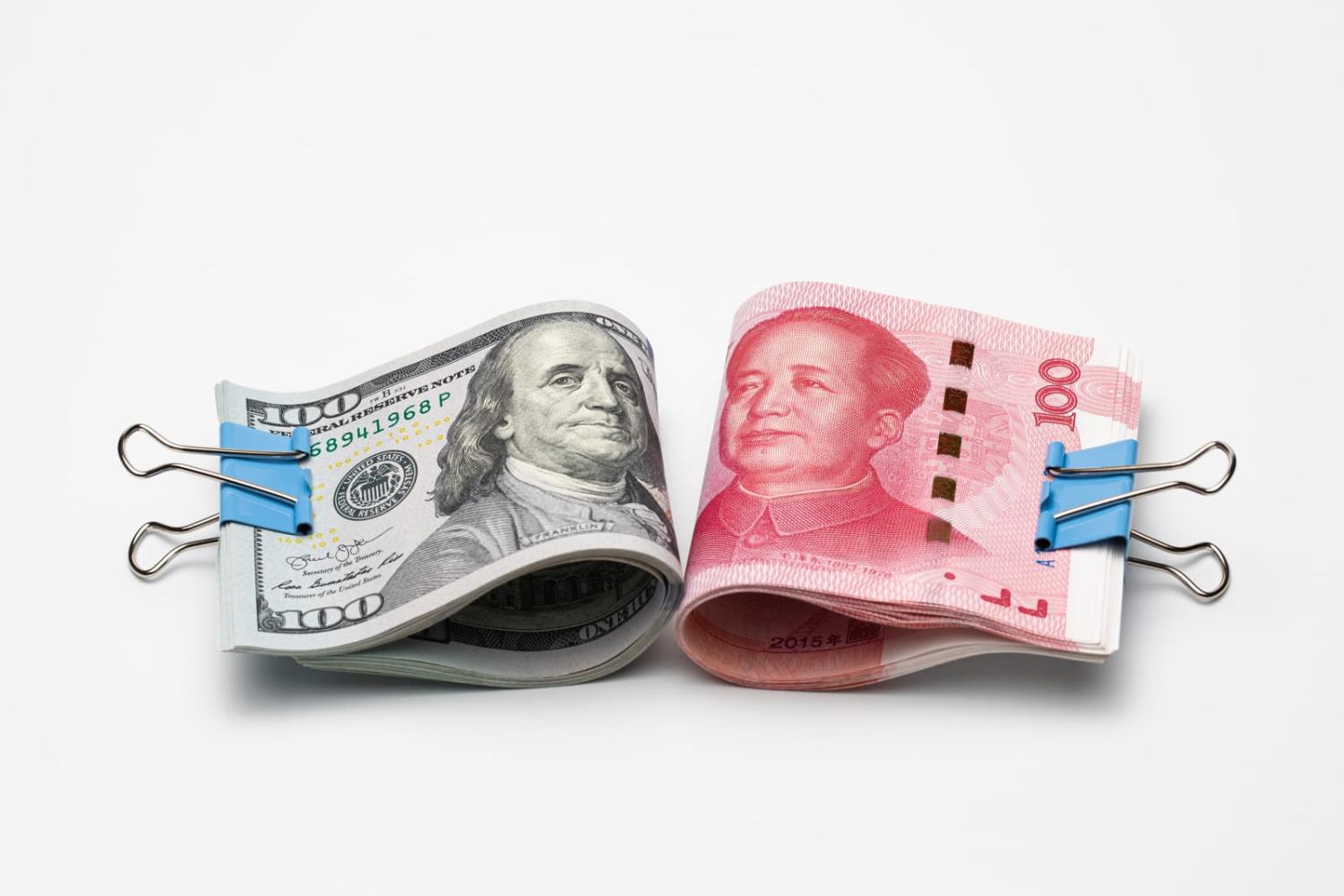Members only
Indonesia took one for the team in an era of minilaterals and “friendshoring” last week when it argued the case for its poorest neighbours to join the latest regional economic club – the Indo-Pacific Economic Framework (IPEF).
Speaking after hosting a meeting of officials from the 14 member US-led group, international economic cooperation deputy minister Edi Prio Pambudi said he would not give up on getting Myanmar, Cambodia and Laos into the latest effort by the United States to fashion an alternative to China’s regional economic power. But he pragmatically acknowledged there might be political motives for excluding the three regional countries most economically dependent on China from an institution at the frontline of decoupling.
And given the way global fragmentation is overshadowing this week's spring meetings of the International Monetary Fund (IMF) and World Bank, Indonesia’s small neighbours might be waiting a long time.
No roaring here
The IMF warned on Tuesday that there was a 25 per cent chance global growth could fall below two per cent this year – something that has only happened five times since 1970. This assessment has deeper foundations in the Bank’s pessimistic study of long-term growth, released in late March.
The world is facing “a lost decade in the making”, the World Bank notes, with potential growth falling to an average of 2.2 per cent a year to 2030, which compares with 3.5 per cent in the first decade of the century. And developing countries won’t be insulated with a parallel one third decline in their growth from six to four per cent.
This study is more about developing better ways of calculating the drivers of potential higher and better quality growth to chart a way out of the problem, rather than analysing the role of current security tensions.
For example, it tackles the idea there will be a post-pandemic burst of technological innovation, like that which followed the Spanish flu in the 1920s. The World Bank concludes that the 2020s seem unlikely to be “roaring” with modern equivalents of the establishment of automobile assembly lines and household power grids of a century ago. But it nonetheless concludes:
Effective new methods of cooperation – on trade, climate, finance, debt transparency, fragility, health and infrastructure, to name a few – will be essential if the world is to mobilise the investment that will be needed to achieve sustainable growth and poverty alleviation.
Disunited Nations
The IMF wrangles with geopolitics and financial fragmentation much more directly in its Global Financial Stability Report (GFSR) amid the immediate challenge of bank collapses and again in the World Economic Outlook (WEO) amid immediate inflation pressures.
Using voting behaviour in the United Nations General Assembly to determine geopolitical distance between countries, the GFSR finds that bilateral financial linkages between countries appear to have weakened in recent years, with cross-border investment becoming more concentrated in fewer partner countries. So “although global financial inter-linkages are complex and driven by many factors, geopolitical affinities … do seem to matter for cross-border capital allocation.”
And in a challenge to the “earth is flat” concept of globalisation, the research shows that countries tend to allocate significantly less capital to recipient countries with which they have less agreement on foreign policy issues. Association with the United States or China in the United Nations can lead to a variation in bank lending from the other country of about 15 per cent or 20 per cent for investment by funds.
In summary the GFSR says:
Financial fragmentation induced by geopolitical tensions can increase banks’ funding costs, reduce their profitability, and prompt them to contract lending, with potentially adverse effects on economic activity.
Meanwhile, the broader WEO has tried to look beyond the trade and technological decoupling that has followed recent US-China security tensions to examine whether this is spreading to foreign direct investment (FDI). It argues this could be the sphere where the emergence of geopolitical blocs could have the most impact since FDI accounts for 12 per cent of global capital stock and is associated with knowledge transfer and high economic growth, especially in developing economies.
The study concludes that FDI flows are increasingly concentrated among countries that are geopolitically aligned. And as the Albanese government has just legislated its National Reconstruction Fund, the IMF says that the rise of domestic strategic manufacturing initiatives will intensify the shift to “friendshoring”.
In a striking finding the research shows a decline in “strategic” investment into Asian countries since 2019 and a rise in these flows to the United States and Europe so that by the end of last year, “strategic” capital flow to Europe was twice that to Asia. “Asia became less relevant both as a source and host, losing market share vis-à-vis almost all other regions,” the report says.
This finding is underlined by the IMF’s creation of a geopolitical vulnerability index which attempts to identify countries vulnerable to friendshoring which turns out to be surprisingly ideologically blind by identifying China, India and Vietnam as almost equally vulnerable.

There has been a slowdown in FDI for some time with a decline from 3.3 per cent of global GDP in the 2000s to 1.3 per cent in 2018–22, but the WEO says the new investment fragmentation along geopolitical faultlines contains “novel elements” which will have “large negative spillovers for the global economy.”
And what do the IMF country directors think of all this research caught between US-China rivalry and the institution’s traditional bias towards market-based solutions to global economic challenges?
The WEO contains a delphic summation that hints at a deep divide:
Most Directors also agreed that fragmentation into geopolitical blocs could generate large output losses, including through effects on foreign direct investment, and especially affecting emerging market and developing economies; a few Directors emphasised the need to build resilience and diversification in supply chains.
Hubs and spokes
United States Treasury Secretary Janet Yellen sought to play down the risks of fragmentation this week by admitting that friendshoring – of which she was an early advocate, was really all about reducing dependence on China rather a wholesale reshaping of supply chains.
But research in the World Bank’s regional update suggests that decoupling is having variable impacts on Asian countries and they should strive to maintain links with both the United States and China. For example, Vietnam saw its final exports to the United States increase as it replaced Chinese exports due to the tariffs. But at the same time while its final exports to China remained flat, its economic integration with China has deepened due to its increased imports of intermediate products needed for its final export production.
The Bank observes of fragmented new trade relationships: “Those competing with US-China trade can benefit from the trade diversion effect and experience increased trade with either the US or China, whereas those complementing US-China trade through global value chain linkages will likely suffer from a negative spill over as tariffs ripple through the value chains.”
Turning the fragmentation debate on its head, it argues that the United States and China risk becoming spokes rather hubs in global production chains due to their competition. But countries like Malaysia should concentrate on trying to be hubs with links to both the new spokes through different trade groups.
Homeward bound
Guest workers may be a long way from superpower rivalry but they are likely to be among the unwitting victims of such tensions when their remittances account for an average of 2.5 per cent of GDP and up to a 25 per cent in some labour exporting countries.
The Group of 20 has committed to cutting the cost of sending money home to five per cent and the United Nations Sustainable Development Goals targets an even lower three per cent by 2030.
But IMF research shows that financial sanctions such as those on Russia increase the overall cost of remittances by three per cent and can cut the volume by 17 per cent after six quarters. For example, the cost rose 27 per cent in Central Asia and eastern Europe in the second quarter of the Ukraine War.
This comes as the ADB has welcomed double digit increases in remittances in the South Pacific as labour migration to Australia opens up. But flows are still down five per cent in Pakistan and Bangladesh due to slowdowns in labour host countries.
All aboard
While China’s post-Covid economic recovery is being welcomed in its neighbours as the rich world now faces a slowdown, they are also waiting for the second Chinese shoe of a tourism recovery to drop.
The ADB says 110 million outbound travellers will leave China this year – but that’s only two thirds of the 2019 level. Asian countries snared 55 per cent of Chinese tourists in 2019 but they may get a bigger share of the rebound travel due to proximity and some remaining restrictions on Chinese travellers in some Western countries.
“Their spending will lift employment and support many sectors of the economy and not just tourism because of multiplier effects,” the ADB Outlook says of countries as diverse as Cambodia and South Korea where these tourists used to provide about 40 per cent of arrivals.
But the ASEAN+3 Macroeconomic Research Office (AMRO) is more cautious warning: “Outbound tourism from China will not recover immediately as cautious tourists may opt not to leave the country for now. The pace of recovery will also be affected by capacity constraints in international air travel and in the hospitality and tourism sectors of receiving economies.”

